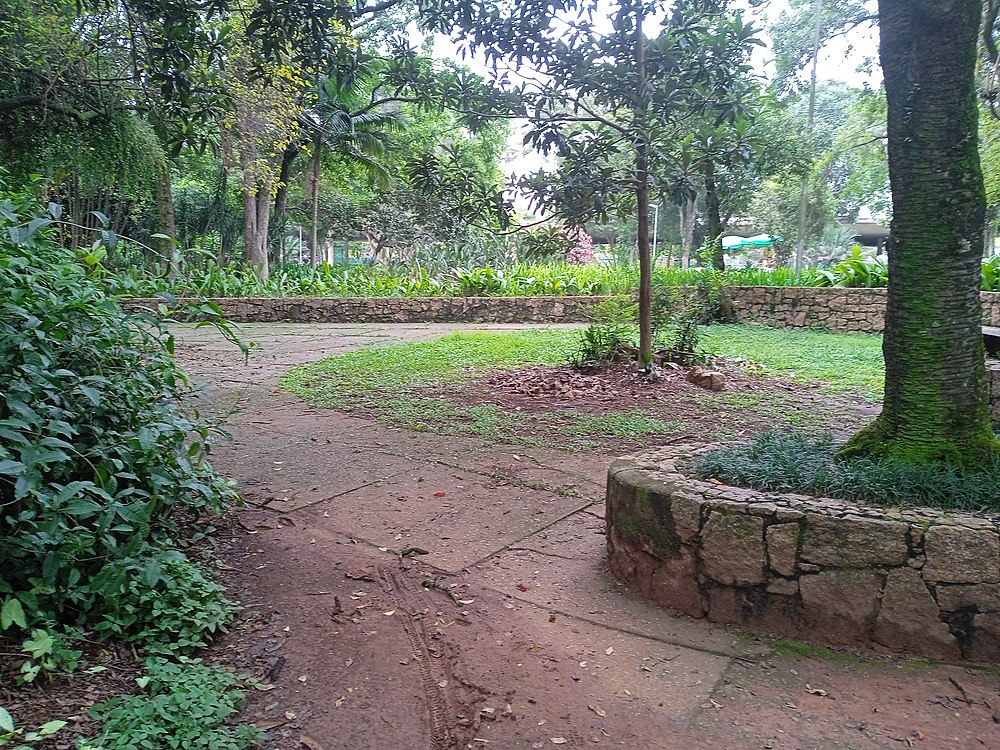Ibirapuera Park
This article needs additional citations for verification. (April 2009) |
| Ibirapuera Park | |
|---|---|
 The Ibirapuera Park during Christmas time. | |
 | |
| Type | Urban park |
| Location | São Paulo, Brazil |
| Area | 545 acres (221 ha) |
| Created | 1954 |
| Status | Open all year |
Ibirapuera Park (Portuguese: Parque Ibirapuera) is a major urban park in São Paulo, Brazil. It has a large area for leisure, jogging and walking, as well as a convention center. Its importance to São Paulo is comparable to that of the Central Park to New York City. The Ibirapuera is one of Latin America largest city parks, together with Chapultepec Park, in Mexico City and Simón Bolívar Park in Bogota.
History
Inaugurated in 1954 for the 400th anniversary of the city, with buildings designed by famous architect Oscar Niemeyer and landscape by designer Roberto Burle Marx, Ibirapuera Park covers an area of almost 2 square kilometres (0.77 sq mi). It is the second biggest park in the city. Admission is free.
Features
The park complex contains several buildings, most of them designed by Oscar Niemeyer. They include:
- The Grande Marquise ("The great marquee"), location of the MAM - Museu de Arte Moderna] ("Modern Art Museum");
- The Cicillo Matarazzo Pavilion, home for the Museum of Contemporary Art, University of São Paulo, and a space for events and expos, including the São Paulo Art Biennial and the São Paulo Fashion Week;
- The Manoel da Nóbrega Pavilion, which until 1992 was the city hall;
- The Lucas Nogueira Garcez Pavilion, formerly known as "Palácio das Exposições"("Expositions Palace") and now known as the Oca ("hut", given its round shape), which harbors both the Museu da Aeronáutica ("Air Force Museum") and the Museu do Folclore ("Folklore Museum");
- The Armando de Arruda Pereira Pavilion, home for the Prodam - Companhia de Processamento de Dados do Município ("Municipal Data Processing Company");
- The Palácio da Agricultura ("Agriculture Palace"), home of Detran, municipal transit department. The building was originally intended to harbor the municipal agriculture department;
- The Planetarium and Municipal Astrophysics School. The Planetarium building which is shaped like a flying saucer. It was the first Planetarium in the Southern Hemisphere and has a dome which is 20 meters in diameter. The German projection machine shows the sky above São Paulo from dusk to dawn. During the projection a professional astronomer explains the most famous stars and constellations as well as the movements of the Earth and other planets;
- The Gymnasium;
- The Japanese Pavilion
- The Monumento às Bandeiras
- The Ibirapuera Auditorium, controversial building that was on the original Niemeyer plan, but was only built recently.
- The Obelisk of São Paulo, symbol of the Constitutionalist Revolution of 1932
- A statue of Pedro Alvares Cabral that alleges "Brazilians owe everything to Portugal."[1]
References
- ^ Fitzpatrick, John (2009). "Brazil and Portugal - The Samba and the Fado". gringoes.com. Retrieved 29 November 2010.
External links
- Official website.. Managed by Ibirapuera Park Management Council, it allows civil society to interact with Park's Administration.
- Auditório Ibirapuera
- Unofficial website
- Museum of Contemporary Art
23°35′18″S 46°39′32″W / 23.58833°S 46.65889°W Template:Popular visitor attractions in São Paulo

